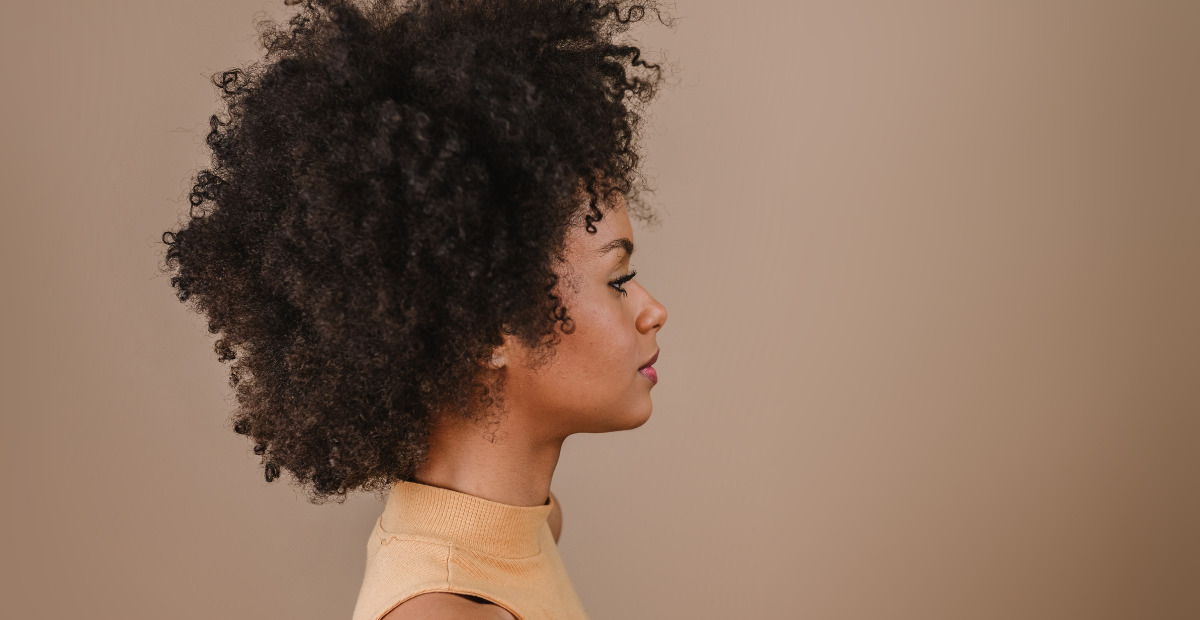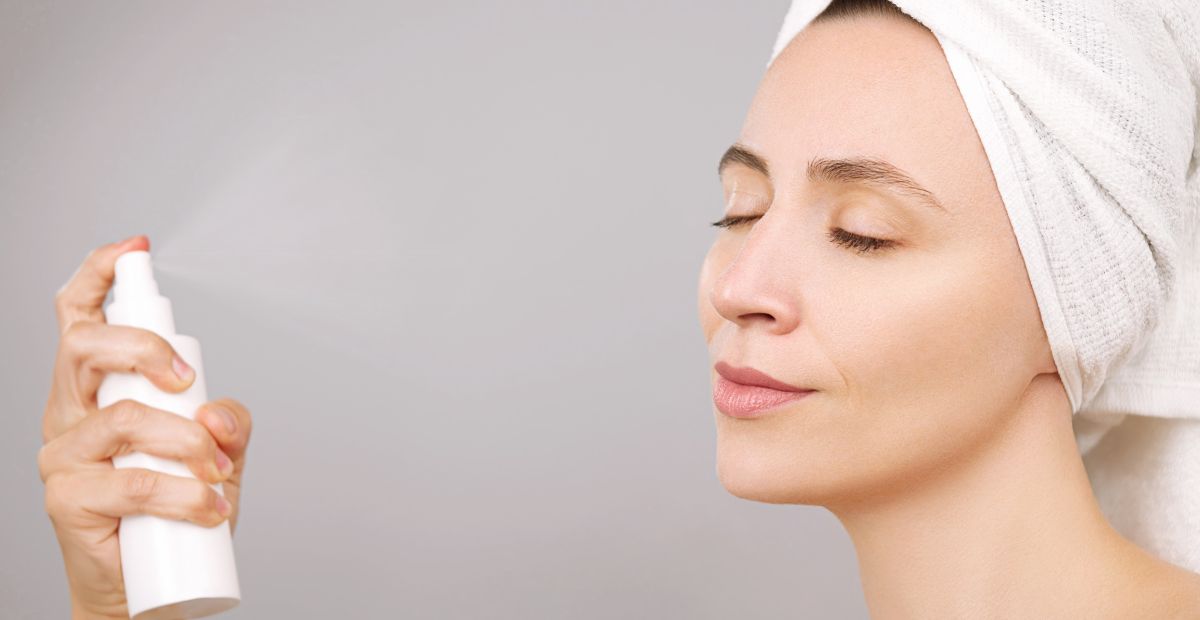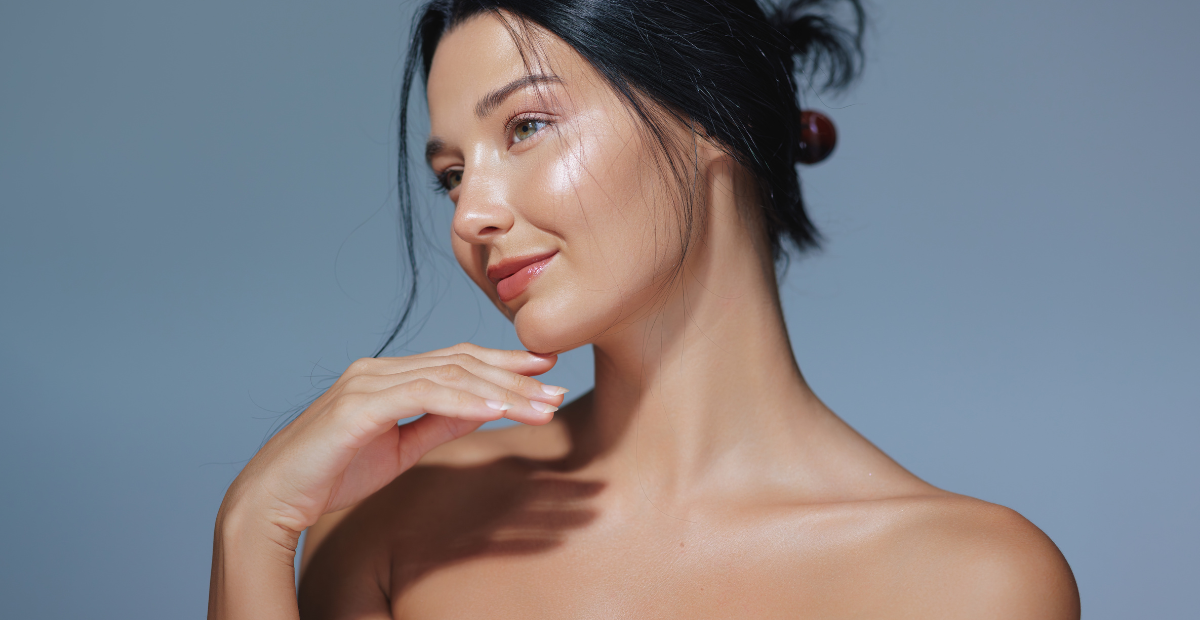Best Scalp Massager: Which Should You Swipe Right On?
Onskin Content Team
Your guides through the skincare chaos

If you’ve ever watched a haircare routine video, you’ve probably noticed a scalp massager (often called a shampoo brush, scalp brush, or scalp exfoliator) making an appearance in nearly all of them. These tools have quickly become haircare staples, though not without a bit of controversy. So, are they actually lock-friendly? What qualities should the best scalp massager have? And do they offer as many positive effects as claimed, if any?
Let’s break it down step-by-step.
Are Scalp Massagers Beneficial?
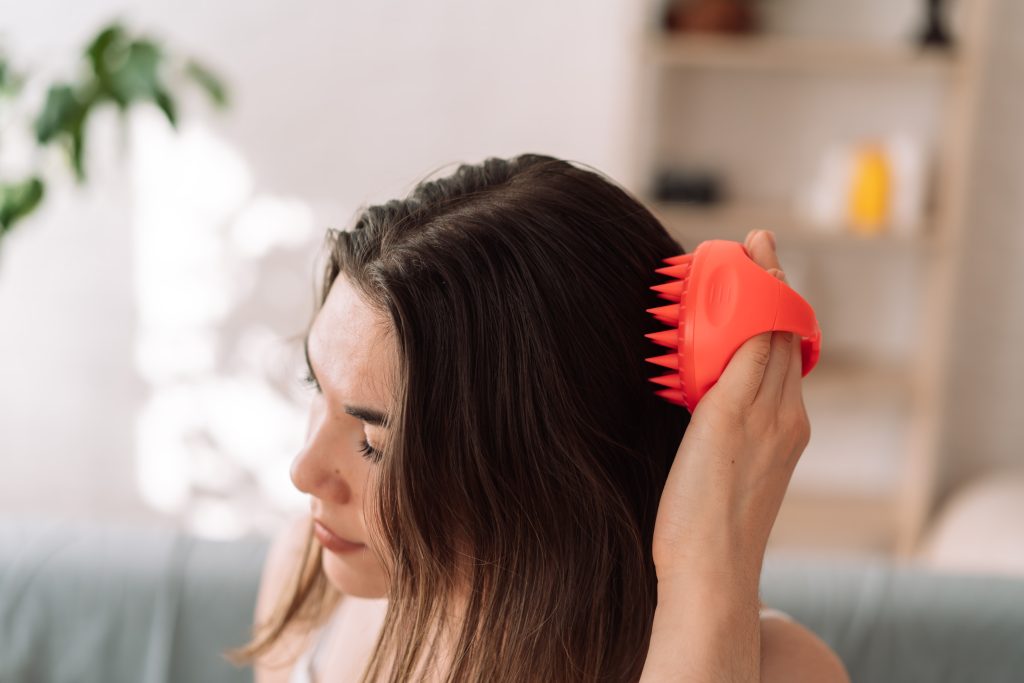
May this be the saddest news of your day—there’s not much solid research on how scalp massagers affect hair and scalp health. Still, some studies say these tools can help thicken hair, and a few small studies suggest they might reduce hair loss by boosting blood circulation and bringing in more hair-growth factors and nutrients. So, if you’re feeling frustrated with slow hair growth, regretting a pixie cut or bangs, or just want to show the skin on your head some extra love, a scalp massager could be a great new-in for your haircare routine.
Another perk that many fans rave about with this tool is its ability to enhance the absorption of haircare products—shampoos, conditioners, masks, oils, and other treatments—potentially leading to even better results. (Our team has noticed that scalp massagers make shampooing more effective, leading to cleaner, fresher hair.)
In addition to boosting product penetration, scalp massagers act as gentle exfoliators, removing buildup from hair mists and styling gels, including that from silicone-based products. This cleansing helps prevent issues like dandruff and dull, brittle hair.
And here’s the cherry on top—massaging the skin on your head with these tools can quickly relieve tension, help you unwind, and even lower your heart rate and blood pressure. Who says a regular hair-washing day can’t turn into a massage session? Plus, unlike some types of massages, this one you can enjoy at home while blasting your favorite music, all for (almost) free.
Best Scalp Massager: What’s It Like?

If there were a rulebook on choosing a scalp massager, Chapter 1 would be in bold: The best scalp massager should be gentle on your scalp and hair—no tearing, no harsh sensations, no itching, and definitely no tangling your hair like crazy! (And detangling? That can be a rollercoaster experience, if you know you know.)
We get it—trusting your sensations is all good, but it’s not always possible to test a massager in-store to see if it feels right. So, here are some tips to help you make a smart blind buy, whether you’re shopping online or in person:
- Choose silicone bristles over plastic. Silicone bristles are sturdier and less likely to break and are great for circular motions.
- Consider your hair type. Thicker, soft bristles are a good match for fragile locks, as they are less likely to cause breakage or tangles. Thinner bristles are more effective for exfoliating the scalp and removing product residue.
- Handle or no handle? This one’s up to you—some people prefer having a handle to grip, while others like using their whole palm to move it around comfortably.
Ways to Use a Scalp Massager
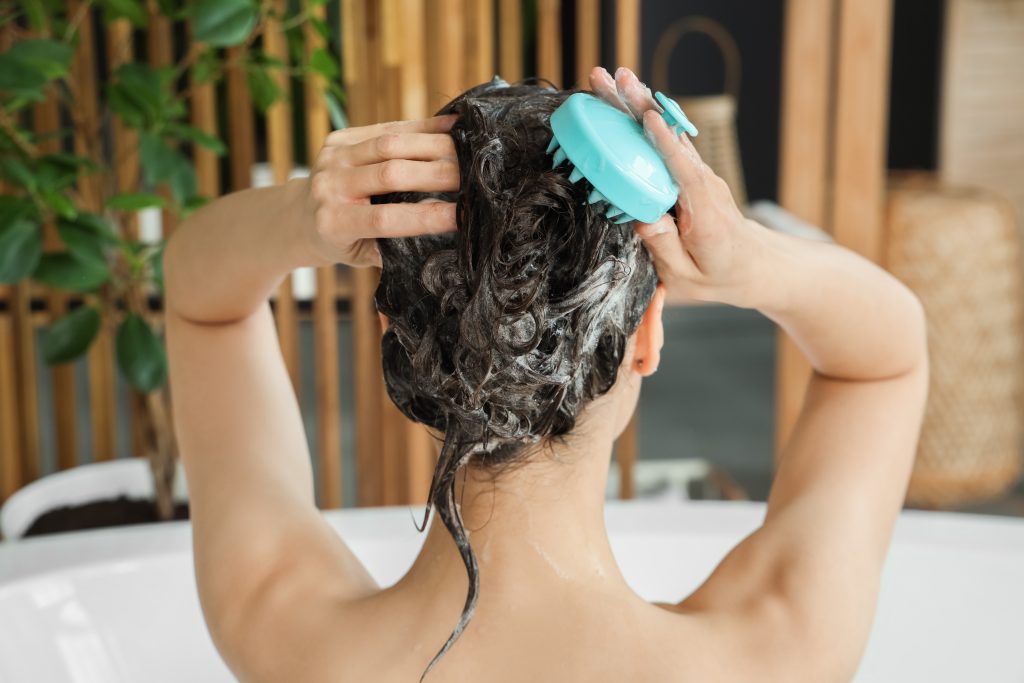
Luckily, scalp massagers are one of those tools with no strict rules—you can experiment to find when they work best for you (or don’t). Here are some times a scalp massager can come in handy:
- On dry hair, before shampooing or treatments. Use it on dry hair to prep your scalp, which can help your products perform even better when applied.
- While shampooing or after applying oils. A scalp massager helps you cleanse and nourish the skin on your head thoroughly, reaching every spot. (We’ve all had that uh-oh moment of discovering a greasy patch we missed, right?). Plus, its bristles often work better than your fingertips, particularly if you have lovely long nails that might scratch the scalp when pressed too firmly. To work in the product, try using circular motions or gentle strokes from the front of your scalp down to the nape of your neck.
🧴A side note: even the best scalp massager can’t replace a quality shampoo that truly matches your hair type and needs. It’s worth checking if your current bottle is the right fit for you with OnSkin—or use it to assess one you’re eyeing.
- On dry hair, as a midday, pre-bed, or work break routine. Because why not? It’s super relaxing and could give your hair a bit of extra love, even if it’s not anything extraordinary.
When It’s Best to Avoid Using Scalp Massagers
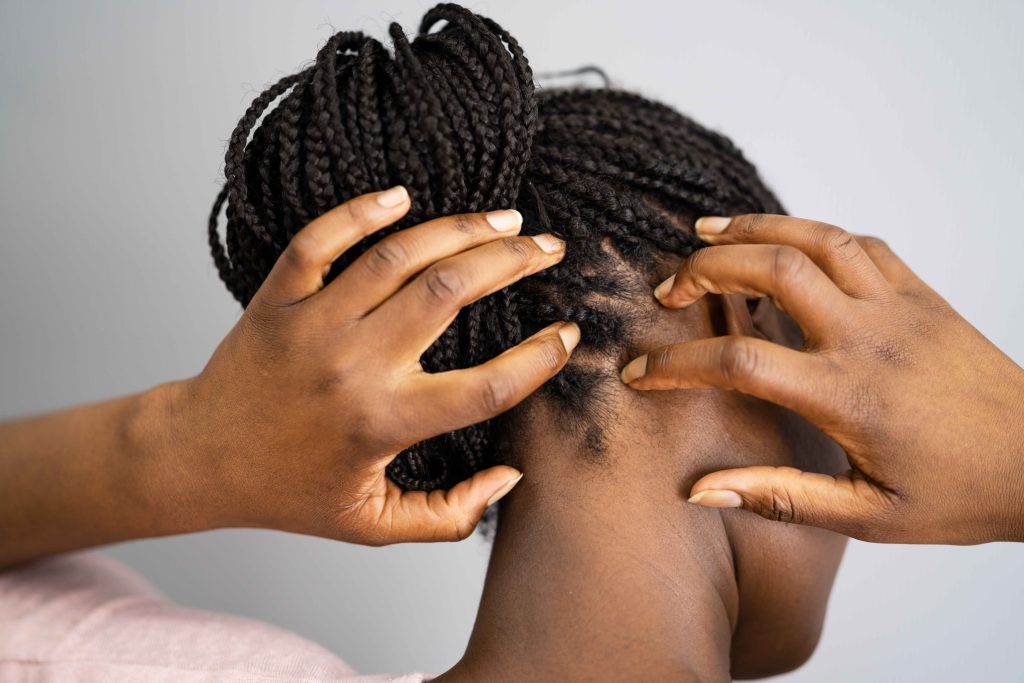
Generally, if you’re on your umpteenth scalp massager and every single one leaves your scalp itchy or irritated, there’s nothing wrong with you—the skin on your head is likely just sensitive, and these tools might be too harsh for it.
Also, if you have any open wounds, cuts, or irritation on your scalp, it’s best to skip the massager for a while, as it can end up damaging the skin further. Also, using the tool too often may lead to irritation, which is the last thing your scalp needs.
Finally, perhaps the most important tip: if you notice any unusual changes—whether or not you’re using a scalp massager, such as increased hair fall, unexpected dandruff, or sudden oiliness—consider consulting a dermatologist, a trusted hair expert, or another healthcare provider. Hair issues can sometimes signal underlying health concerns, and using tools like massagers might do more harm than good in these situations.
Before You Go …
To wrap everything up, here are three essential facts about scalp massagers:
- Although scientific evidence is limited, these tools may help reduce hair fall and improve thickness.
- If you’re looking to relieve stress and ease tension, they can do the job beautifully.
- Opt for silicone tools that feel comfortable on your scalp and avoid overusing them.
Keep giving your hair the love it deserves—you’re doing fantastic!
- Standardized scalp massage results in increased hair thickness by inducing stretching forces to dermal papilla cells in the subcutaneous tissue. (2016). https://pmc.ncbi.nlm.nih.gov/articles/PMC4740347/
FAQ
-
Where do I start with OnSkin?
Download the app and think of a product you’d like to know more about. Then, go to the main screen and choose how you’d like to get the info —by manually looking it up in the search bar, by scanning its barcode, or by simply taking a picture of the packaging. Once you’ve done any of these, you can see how safe the product is and if it suits your skin or hair (if this analysis is available).
-
What is Safety Rating, and how is it calculated?
In OnSkin, we base product rates on ingredients. Each is closely studied by our medical team and then evaluated. This way, each product gets a score from 0 to 100, with 100 as the safest level.
Safety Levels
- Excellent (76–100)
- Good (51–75)
- Not great (26–50)
- Bad (0–25)
These scores are backed by the latest scientific studies. You can find links to the resources we’ve used on each ingredient page. To assess the safety of product ingredients, we evaluate them according to the following parameters/criteria
- Endocrine disruption risk / Reproductive toxicity
Indicates the probability of mimicking, blocking, or interfering with the body hormones.
- Сarcinogenicity
Measures the potential risk of inducing cancer.
- Allergy risk
Estimates the probability of an allergic reaction.
- High concentration alert
Determines the risk of being unsafe in certain amounts.
-
What is Skin Match?
Based on the info you input about your skin type, age, skin care goal, and other “settings,” OnSkin checks how well a product is tailored to your unique skin needs — it’s basically like a dermatologist helping you find the right products, minus the fees and the long wait. The product you’re checking might be labeled as It’s a match!, Hit-or-miss, or Not a match for you. The app also detects ingredient groups such as Anti-acne, Anti-inflammatory, Moisturizes, May be drying, Comedogenic, and others — by tapping one, you see exactly what ingredients from this or that group are in the product.
-
I seem to have a problem with using the app. Who should I contact?
Please reach out to us at [email protected], and we’ll carefully look into your issue. Your ideas for improving the app are also very welcome!
-
Do you have an Android version?
Not yet! Hey Android users, we hear you, and we're thinking about making an Android version, but we haven't started the development yet.
Tracker Sent!
It’s on the way to your inbox.


